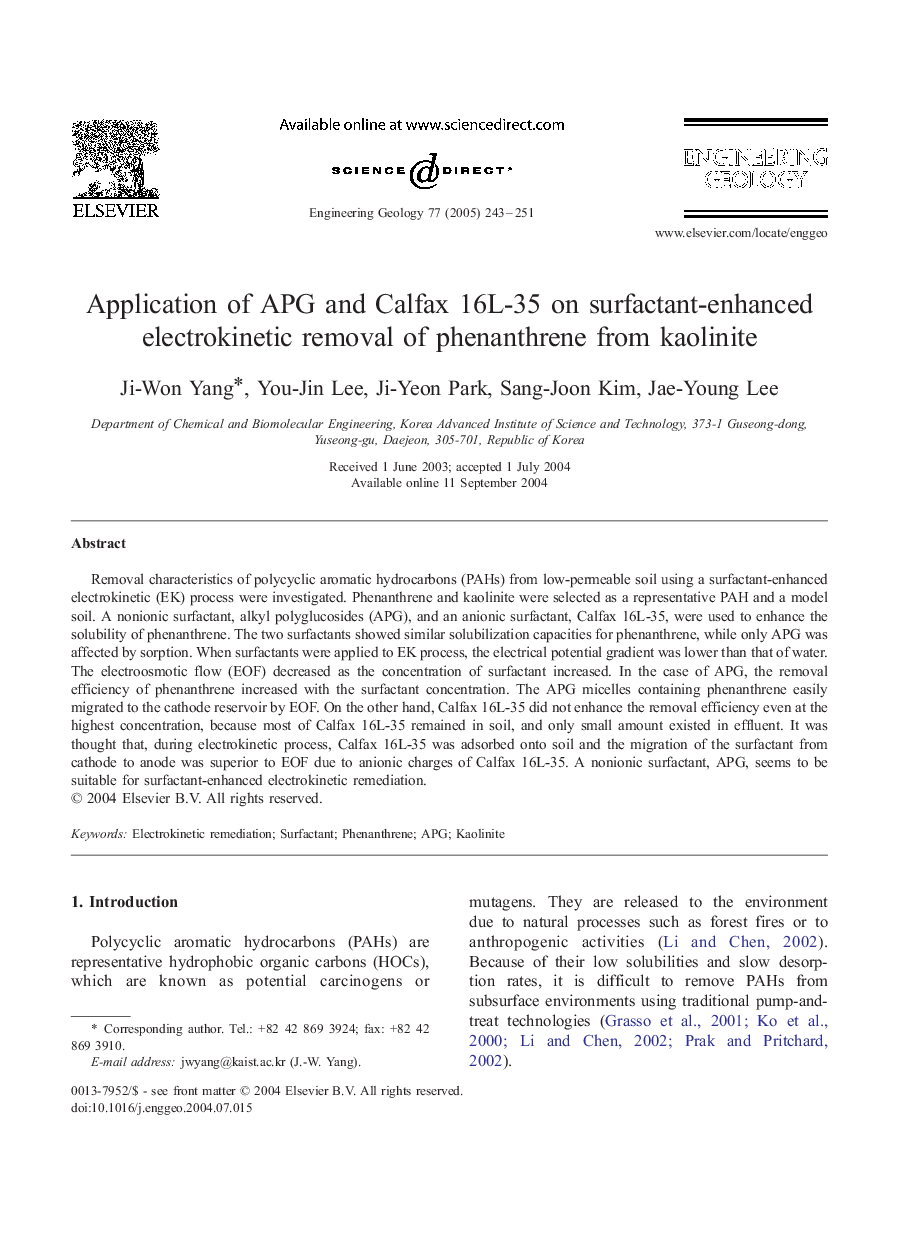| Article ID | Journal | Published Year | Pages | File Type |
|---|---|---|---|---|
| 9537792 | Engineering Geology | 2005 | 9 Pages |
Abstract
Removal characteristics of polycyclic aromatic hydrocarbons (PAHs) from low-permeable soil using a surfactant-enhanced electrokinetic (EK) process were investigated. Phenanthrene and kaolinite were selected as a representative PAH and a model soil. A nonionic surfactant, alkyl polyglucosides (APG), and an anionic surfactant, Calfax 16L-35, were used to enhance the solubility of phenanthrene. The two surfactants showed similar solubilization capacities for phenanthrene, while only APG was affected by sorption. When surfactants were applied to EK process, the electrical potential gradient was lower than that of water. The electroosmotic flow (EOF) decreased as the concentration of surfactant increased. In the case of APG, the removal efficiency of phenanthrene increased with the surfactant concentration. The APG micelles containing phenanthrene easily migrated to the cathode reservoir by EOF. On the other hand, Calfax 16L-35 did not enhance the removal efficiency even at the highest concentration, because most of Calfax 16L-35 remained in soil, and only small amount existed in effluent. It was thought that, during electrokinetic process, Calfax 16L-35 was adsorbed onto soil and the migration of the surfactant from cathode to anode was superior to EOF due to anionic charges of Calfax 16L-35. A nonionic surfactant, APG, seems to be suitable for surfactant-enhanced electrokinetic remediation.
Related Topics
Physical Sciences and Engineering
Earth and Planetary Sciences
Geotechnical Engineering and Engineering Geology
Authors
Ji-Won Yang, You-Jin Lee, Ji-Yeon Park, Sang-Joon Kim, Jae-Young Lee,
